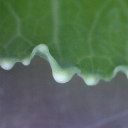- JMP will suspend normal business operations for our Winter Holiday beginning on Wednesday, Dec. 24, 2025, at 5:00 p.m. ET (2:00 p.m. ET for JMP Accounts Receivable).
Regular business hours will resume at 9:00 a.m. EST on Friday, Jan. 2, 2026. - We’re retiring the File Exchange at the end of this year. The JMP Marketplace is now your destination for add-ins and extensions.
- Subscribe to RSS Feed
- Mark Topic as New
- Mark Topic as Read
- Float this Topic for Current User
- Bookmark
- Subscribe
- Mute
- Printer Friendly Page
Discussions
Solve problems, and share tips and tricks with other JMP users.- JMP User Community
- :
- Discussions
- :
- Re: Calculations using the Tabulate function
- Mark as New
- Bookmark
- Subscribe
- Mute
- Subscribe to RSS Feed
- Get Direct Link
- Report Inappropriate Content
Calculations using the Tabulate function
Is there a way to add a simple calcuation of two columns summed in Tabulate, like column A / column B? I know I can make this into a data table, but I wanted to include it in a presentation and the formatting looks much better in the Tabulate window.
Here's a simple example pasted from the Tabulate dialog:
region brand Sum Sum
AU Clinique 104119 103289
Estee Lauder 58009 56009
Jo Malone 30125 29535
La Mer 16895 16730
MAC 106306 111065
Accepted Solutions
- Mark as New
- Bookmark
- Subscribe
- Mute
- Subscribe to RSS Feed
- Get Direct Link
- Report Inappropriate Content
Re: Calculations using the Tabulate function
For this specific example where Mean(.5 x Column) = .5 Mean(Column) that feature also lets you give custom formulas as well. Probably won't work for everything but you might be able to still use the functionality.
- Mark as New
- Bookmark
- Subscribe
- Mute
- Subscribe to RSS Feed
- Get Direct Link
- Report Inappropriate Content
Re: Calculations using the Tabulate function
This answer requires you to create an extra column in your data table but it might be helpful for you.
Have you tried the Statistical - Col Mean function under column formulas? It has a little ^ symbol which means if you add a comma after the name of the column you wish to summarise you can add by variables. Assuming the column you are summarising is called Y.
Col Mean(:Y, :Item)/2
Would give you the summary statistic you desired. Then in tabulate the mean, min or max or this column by Item will give the result you require and you can edit the column text as desired.
I often use this in combination with if statements in my main table so each summary value for each group only appears once in each column. It is the JMP equivalent of SUMIF, AVERAGEIF, COUNTIF, etc.
- Mark as New
- Bookmark
- Subscribe
- Mute
- Subscribe to RSS Feed
- Get Direct Link
- Report Inappropriate Content
Re: Calculations using the Tabulate function
If the nice formatting is what you are after, then the best option now is to create the calculations in a table (as you mentioned), then make the table into a Journal by using the Journal command on the Edit menu. Then right click on the resulting journal and there are a few format options under Table Style.
- Mark as New
- Bookmark
- Subscribe
- Mute
- Subscribe to RSS Feed
- Get Direct Link
- Report Inappropriate Content
Re: Calculations using the Tabulate function
Resurrecting this question: has there been any update in the last 5 and a half years? I was looking for a way to add some arithmetic to a mean but I can't figure out how to do this other than create a new table based on the tabulate. Which obviously kills the interactivity.
Thanks
- Mark as New
- Bookmark
- Subscribe
- Mute
- Subscribe to RSS Feed
- Get Direct Link
- Report Inappropriate Content
Re: Calculations using the Tabulate function
I might not have you entirely understood. But if you select a few columns in the collistbox, then right click them you get an assortment of functions you can do. For instance you can go to combine>Sum and it will give you another column to choose from.
- Mark as New
- Bookmark
- Subscribe
- Mute
- Subscribe to RSS Feed
- Get Direct Link
- Report Inappropriate Content
Re: Calculations using the Tabulate function
My fault for a poorly worded question, I should have been specific in the first place: what I would like to do is end up with 50% of the mean, e.g.
Item Mean 50% of Mean
A 20 10
B 15 7.5
I can do this by using Make Into Data Table and then creating a new column with a formula, but it would be nice if that formula could just be an option in the Tabulate.
- Mark as New
- Bookmark
- Subscribe
- Mute
- Subscribe to RSS Feed
- Get Direct Link
- Report Inappropriate Content
Re: Calculations using the Tabulate function
For this specific example where Mean(.5 x Column) = .5 Mean(Column) that feature also lets you give custom formulas as well. Probably won't work for everything but you might be able to still use the functionality.
- Mark as New
- Bookmark
- Subscribe
- Mute
- Subscribe to RSS Feed
- Get Direct Link
- Report Inappropriate Content
Re: Calculations using the Tabulate function
I had trouble understanding this at first, but I did get it to work. Thanks!
- Mark as New
- Bookmark
- Subscribe
- Mute
- Subscribe to RSS Feed
- Get Direct Link
- Report Inappropriate Content
Re: Calculations using the Tabulate function
This answer requires you to create an extra column in your data table but it might be helpful for you.
Have you tried the Statistical - Col Mean function under column formulas? It has a little ^ symbol which means if you add a comma after the name of the column you wish to summarise you can add by variables. Assuming the column you are summarising is called Y.
Col Mean(:Y, :Item)/2
Would give you the summary statistic you desired. Then in tabulate the mean, min or max or this column by Item will give the result you require and you can edit the column text as desired.
I often use this in combination with if statements in my main table so each summary value for each group only appears once in each column. It is the JMP equivalent of SUMIF, AVERAGEIF, COUNTIF, etc.
- Mark as New
- Bookmark
- Subscribe
- Mute
- Subscribe to RSS Feed
- Get Direct Link
- Report Inappropriate Content
Re: Calculations using the Tabulate function
This one worked as well, and though it requires an extra step, it's more general. Plus, I learned that you can do by variables within certain functions. So, thanks to you, too! Unfortunately, it means you need to know what by variables you want prior to making the Tabulate, which again, sort of kills the interactivity and what I really like about the Tabulate function. But cie la vie.
- Mark as New
- Bookmark
- Subscribe
- Mute
- Subscribe to RSS Feed
- Get Direct Link
- Report Inappropriate Content
Re: Calculations using the Tabulate function
In JMP 11 and 12 you can right click on a numeric column name in the column list of tabulate (and graph builder). If you select formula from the menu you can add the formula column required without leaving tabulate.
Sorry should have pointed that out - I am so used to it being there.
Recommended Articles
- © 2025 JMP Statistical Discovery LLC. All Rights Reserved.
- Terms of Use
- Privacy Statement
- Contact Us


